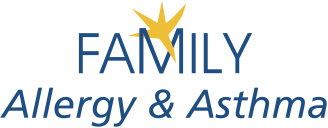Skin Allergy
There are two major types of skin allergies: eczema allergy rash (atopic dermatitis) and hives (urticaria or angioedema). Both are allergic reactions where symptoms occur on or just under the skin.
Eczema
Eczema, or atopic dermatitis, is a skin condition usually caused by allergies in which the skin becomes red, itchy and develops into an allergy rash. The most common type of eczema is known as atopic dermatitis or atopic eczema. Atopic refers to a group of diseases with an often inherited tendency to develop other allergic conditions, such as asthma and hay fever.
Cases of atopic eczema in on the rise, affecting 9 to 30% of the U.S. population. It is particularly common in young children and infants. While many infants who develop the condition outgrow it by their second birthday, some continue to experience symptoms on and off throughout life. Proper treatment can control the disease in the majority of sufferers.
Eczema Treatment
The key to treating eczema is to control the itching. Triggers that can make your itch worse are rough clothes, exposure to allergens (such as foods or dust mites), sweating, using irritating products (including soaps and lotions), local skin infections, or getting emotionally upset.
There are several things you can do to control the itch:
- Avoid rough or tight clothing. Clean, breathable soft cotton is best.
- Wash new clothing several times before wearing.
- Use plain soap powder (not enzyme detergents) when washing clothes and be sure to rinse thoroughly.
- Avoid soap and baths as much as possible. Use soap substitutes.
- Take quick showers or baths with only slightly warm water.
- Pat dry (never rub) after bathing.
- Apply a lubricating moisturizer after bathing while the skin is still damp. Apply the moisturizer several times a day to areas of the skin that are very dry.
- Antihistamines are nearly always helpful to control the itching and should be taken on a regular daily basis. This is one place where a sedating antihistamine taken at bedtime can be beneficial.
- Topical corticosteroid creams or ointments applied to the areas of rash (as prescribed) will help control the rash and itching. These are also most effective if applied after washing and before the skin is dry. As the rash clears, you can decrease the use of cream. Potent steroids should never be applied to the face unless an allergist or dermatologist gives specific instructions. Contact your doctor, if you are not sure what your topical prescription is.
- If the skin gets extremely red, or if pus appears, there may be an infection, and you should see your doctor immediately. If you do not clear the infection, your skin condition will not clear.
Hives
Hives are red, itchy, swollen areas of the skin. They often appear in clusters with new clusters appearing as others clear. Hives can arise suddenly, may leave as quickly as one or two hours, or last as long as 24 hours. 20% of the population has suffered from hives at least once in their lives.
What Causes Hives?
Hives are often triggered by foods or medications. Among the most common foods that cause hives are peanuts, tree nuts (almonds, walnuts, etc.) and shellfish (crab, shrimp, oysters, etc.). Common medications associated with hives include penicillin, sulfa, phenobarbital, and aspirin.
Types of hives that are not triggered by an allergy:
- Cholinergic urticaria is the medical term for hives that appear after an activity that increases the body temperature like hot tub use, exercise, fever, or emotional stress. The hives usually occur as the skin cools after being warmed.
- Cold-induced hives occur after exposure to cold wind or water and often appear on the lips or mouth.
- Solar hives are caused by exposure to sunlight or a sunlamp, and a reaction can occur within one to three minutes.
- Exercise can trigger hives. With exercise-induced hives, some individuals may develop a lung obstruction and may lose consciousness. This severe reaction is called anaphylaxis and may be fatal.
- Chronic urticaria are hives that continue either daily or frequently for longer than four weeks.
Treatment of Hives
If foods or medication triggers your hives, avoidance is the only method of treatment. For the treatment of symptoms, antihistamines are used to treat recurrent episodes. Many of the newer, non-sedating antihistamines have been approved for the treatment of hives. If you suffer from hives, an allergy specialist is specially trained to diagnose and create a treatment plan that is best for you.
Don’t suffer from hives caused by untreated allergies. Schedule an appointment today with one of our board-certified allergists, and move towards a clearer tomorrow.
